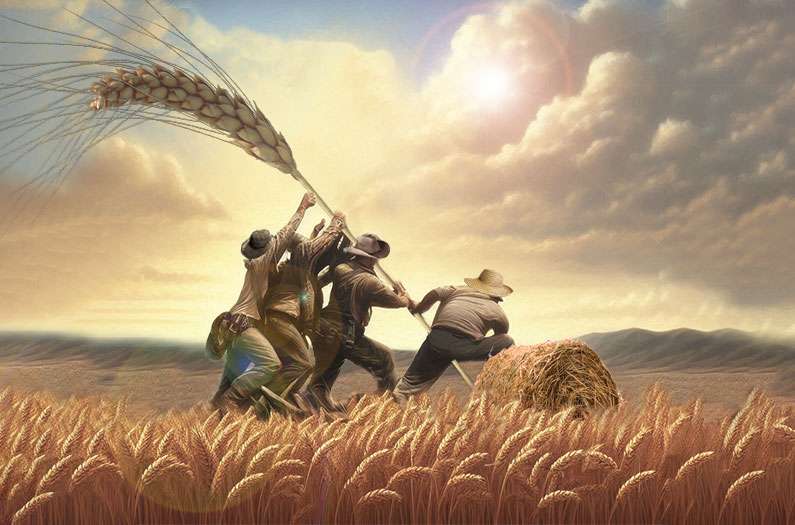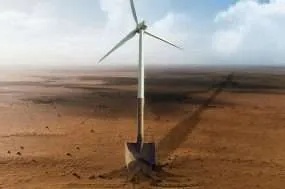One of humanity’s greatest achievements over the past 50 years has been reducing global hunger—there are around 300 million fewer people experiencing hunger than there were in 1980, despite the planet’s population almost doubling. But that success has come at the cost of rampant use of fossil fuel fertilizers, legions of livestock, and supply chains that jet fresh foods halfway around the globe.
Food production now accounts for a quarter of the world’s greenhouse gas emissions—and the problem is growing. The World Resources Institutes estimates an area of new farmland twice the size of India will be needed this century.
There’s an underlying moral dilemma here—if we want to ensure a welcoming climate for growing crops in the future, we need to massively scale back agriculture’s carbon footprint now. But that will take enormous investment and emerging technologies that could shift the focus from those suffering from hunger right now.
Ultimately, can we reinvent agriculture for a low-carbon world without people going hungry today?
• • •
Yes, We’re Moving In The Right Direction
1. Hunger is mostly falling. Country rankings at the Global Hunger Index paint a picture of positive progress this century, with dozens of countries moving from “alarming” or “serious” hunger levels to “moderate” or “low.” The world’s hunger index in 2024 is the lowest it has ever been—although its decline has stalled recently.
Source:Global Hunger Index
2. Despite climate change, yields are rising. Check out this illuminating series of articles by Our World In Data showing that while climate change has had a negative effect over the last 40 years, that has been vastly outweighed by improved efficiencies and better irrigation. And many underperforming countries are still a long way from the yields they could get if they had access to the best inputs and practices. “Crucially, the gap is often far larger than the potential yield reductions due to climate change, even in the worst-case scenarios,” writes Hannah Ritchie.
Source: Our World in Data
3. Change will be dirty at first but could get cleaner. Admittedly, some of the most powerful solutions to low yields are fossil fuel-intensive, particularly increasing the use of fertilizers and pesticides. Farmers in Sub-Saharan Africa currently use 100 times less fertilizers than those in richer countries. There are plans afoot to develop lower-carbon fertilizers, but these will take time to scale up, as will other techniques like enhanced rock weathering. This system of applying alkaline rocks to farmland can boost yields even as it captures carbon.
• • •
No, We’re Not Adapting Fast Enough
1. Prices are rising. Econ 101 tells us that If there’s a shortage of something, prices pop. In a depressingly readable New York Times column from July, David Wallace-Wells notes that US wholesale food prices (adjusted for inflation) have shot up 50% since 1999, with products like olive oil and cocoa more than tripling in price in just the last few years. Cornell University economist Christopher Barrett writes that high prices are due to “the slowdown since 2000 in agrifood system productivity growth in the face of rising food, fuel, fiber, and feed demand.” He links high prices to poor diets, dietary imbalances, and societal conflict.
2. Our bad climate decisions are catching up with us. Crops need water. Not too much, not too little, and definitely not salty. Reckless exploitation of groundwater in the US has led to about 25,000 farmers fallowing their fields each year, and groundwater depletion is accelerating. Globally, much fertile agricultural land borders rivers and coasts. The UN estimates 10 to 20% of arable land in the Nile and Mekong deltas will be underwater by 2100, due to sea level rise.
3. The biggest problem isn’t climate change, it’s politics. The Global Network Against Food Crises says the primary driver for food insecurity in 2024 is conflict, particularly in Palestine/Gaza, the Sudan and Haiti, followed by economic shocks. Weather extremes come in third place. The Global Hunger Index goes a step further, noting that gender violence and inequality goes hand in hand with hunger from climate change in many countries. “Climate change has played a much smaller role in determining agricultural productivity than factors like technological adoption, social change, and economic growth,” writes Vijaya Ramachandran at the Breakthrough Institute.
• • •
What To Keep An Eye On
1. New crops. Agricultural progress didn’t stop with the Green Revolution. A new generation of crops include low-carbon perennial versions of annual staple crops like wheat and rice, drought-tolerant species to cope with extreme weather, and even genes that could enable agriculture to thrive along salt-drenched coastlines.
2. Africa. Sub-Saharan Africa remains the region with most of the world’s severe hunger. Its farmers have the lowest agricultural productivity and yet it is the only major world region facing significant population growth in the decades ahead. The UN sees a path forward with investment in energy infrastructure unlocking digital communications and data to transform agricultural production, management and governance. Cheaper, green power could also drastically reduce food waste with improved cold chains.
3. AI. The latest machine learning algorithms can accurately predict a crop’s future growth, health, and yields, based on a single snapshot of a young plant. That could put precision agriculture into the hands of any farmer with a smartphone, reducing pesticide use and wasted irrigation, and improving the timing of harvests.
Top image ©Anthropocene Magazine










